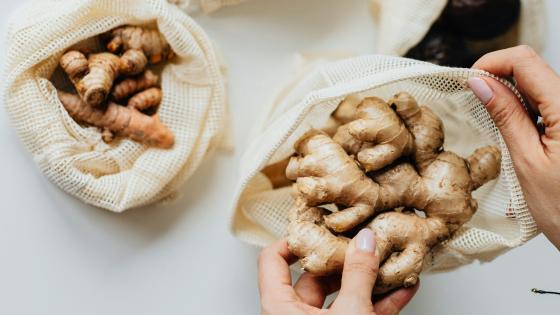
Ginger & Turmeric
Ginger & Turmeric
Ginger (Zingiber officinale Roscoe) and turmeric (Curcuma longa) both have a long history of use in Asian, African, and Caribbean cuisines. Fresh ginger is available year-round in the U.S. and Canada from produce wholesalers sourcing from global suppliers, and both are widely available in their dried, ground form that is produced from their underground rhizomes.
Key Requirements
| Land | Low |
| Labor | Medium to High |
| Capital | High |
Take the HortBizQuiz to see how much Land, Labor, and Capital you have for your operation.
Markets
- Direct to Consumer
- Farmer's Markets
- On-Farm Stands
- CSA
- Restaurants
Pests & Disease
Soil-born and seed-borne diseases can devastate ginger and turmeric production. The crops are susceptible to bacterial wilt, bacterial soft rot, and Pythium. Many soil-borne diseases can be avoided by purchasing tissue cultured, disease-free stock.
Costs and returns are presented as estimates. They will vary based on your farm and markets.
Costs and returns are presented as estimates. They will vary based on your farm and markets.
Challenges
- The largest expense is the cost of establishing and maintaining the high tunnel for ginger and turmeric production.
- While both ginger and turmeric have received attention in the health and wellness market, producers need to understand the potential ramifications of marking health claims when selling fresh produce.
- For the fresh market, ginger and turmeric are examples of niche crops where local markets could become easily saturated by overproduction.
Opportunities
- Consumer interest in using fresh spices have increased over the years.
- Can be harvested at varying maturities.